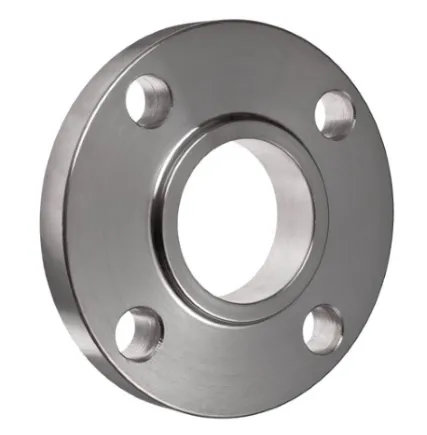-
Cangzhou Yulong Steel Co., Ltd.
-
Phone:
+86 13303177267 -
Email:
admin@ylsteelfittings.com
- English
- Arabic
- Italian
- Spanish
- Portuguese
- German
- kazakh
- Persian
- Greek
- French
- Russian
- Polish
- Thai
- Indonesian
- Vietnamese
- Zulu
- Korean
- Uzbek
- Hindi
- Serbian
- Malay
- Ukrainian
- Gujarati
- Haitian Creole
- hausa
- hawaiian
- Hebrew
- Miao
- Hungarian
- Icelandic
- igbo
- irish
- Japanese
- Javanese
- Kannada
- Khmer
- Rwandese
- Afrikaans
- Albanian
- Amharic
- Armenian
- Azerbaijani
- Basque
- Belarusian
- Bengali
- Bosnian
- Bulgarian
- Catalan
- Cebuano
- China
- China (Taiwan)
- Corsican
- Croatian
- Czech
- Danish
- Esperanto
- Estonian
- Finnish
- Frisian
- Galician
- Georgian
- Kurdish
- Kyrgyz
- Lao
- Latin
- Latvian
- Lithuanian
- Luxembourgish
- Macedonian
- Malgashi
- Malayalam
- Maltese
- Maori
- Marathi
- Mongolian
- Myanmar
- Nepali
- Norwegian
- Norwegian
- Occitan
- Pashto
- Dutch
- Punjabi
- Romanian
- Samoan
- Scottish Gaelic
- Sesotho
- Shona
- Sindhi
- Sinhala
- Slovak
- Slovenian
- Somali
- Sundanese
- Swahili
- Swedish
- Tagalog
- Tajik
- Tamil
- Tatar
- Telugu
- Turkish
- Turkmen
- Urdu
- Uighur
- Welsh
- Bantu
- Yiddish
- Yoruba

Sep . 28, 2024 18:40 Back to list
api 5l x60 pipe wall thickness
Understanding API 5L X60 Pipe Wall Thickness
API 5L X60 pipes are an essential component in the oil and gas industry, specifically designed for the transportation of natural gas, crude oil, and water. Understanding the wall thickness of these pipes is crucial for ensuring their performance, safety, and longevity.
Overview of API 5L X60
API 5L is a specification developed by the American Petroleum Institute (API) that outlines the requirements for line pipes used in transportation pipelines. The X60 designation indicates a minimum yield strength of 60,000 psi (pounds per square inch), making it suitable for high-pressure applications. The pipes are primarily made from carbon steel and are manufactured using various processes to ensure quality and reliability.
Importance of Wall Thickness
Wall thickness is a vital parameter that directly impacts the mechanical strength and performance of API 5L X60 pipes. Thicker walls provide increased resistance to internal pressures and external forces, thereby enhancing the pipe’s ability to withstand harsh operating conditions. Conversely, thinner walls may lead to increased susceptibility to damage, corrosion, and leaks, which can compromise the integrity of the pipeline and pose safety risks.
Factors Influencing Wall Thickness
Several factors influence the required wall thickness of API 5L X60 pipes
1. Internal Pressure The primary factor affecting wall thickness is the internal pressure the pipe must withstand. Higher pressure applications necessitate thicker walls to prevent failure.
2. Diameter of the Pipe Larger diameter pipes typically require thicker walls due to the greater surface area that must withstand the same internal pressure.
api 5l x60 pipe wall thickness

3. Material Properties The mechanical properties of the steel used in the pipe also play a significant role. Higher-strength materials can allow for thinner walls while still meeting safety standards.
4. Environmental Conditions The corrosive nature of the fluids transported and the external environment can also dictate the need for thicker walls. For instance, pipes functioning in corrosive environments may require additional thickness to counteract material loss over time.
5. Standards and Regulations Compliance with industry standards and regulations also requires careful consideration of wall thickness to ensure safety and reliability in transportation.
Calculating Wall Thickness
The wall thickness of API 5L X60 pipes can be calculated using the formula derived from the Barlow's formula, which is given by
\[ t = \frac{PD}{2SE} \]
Where - \( t \) = wall thickness - \( P \) = internal pressure - \( D \) = outside diameter of the pipe - \( S \) = yield strength of the material - \( E \) = design factor accounting for safety and environmental conditions
Conclusion
In summary, the wall thickness of API 5L X60 pipes is a critical aspect that influences their performance and reliability in transporting essential resources. Proper calculations and adherence to industry standards are paramount in ensuring the suitability of these pipes for their intended applications. By understanding the factors that affect wall thickness, engineers and project managers can make informed decisions that enhance safety and efficiency in pipeline operations.
Latest news
-
ANSI 150P SS304 SO FLANGE
NewsFeb.14,2025
-
ASTM A333GR6 STEEL PIPE
NewsJan.20,2025
-
ANSI B16.5 WELDING NECK FLANGE
NewsJan.15,2026
-
ANSI B16.5 SLIP-ON FLANGE
NewsApr.19,2024
-
SABS 1123 FLANGE
NewsJan.15,2025
-
DIN86044 PLATE FLANGE
NewsApr.19,2024
-
DIN2527 BLIND FLANGE
NewsApr.12,2024
-
JIS B2311 Butt-Welding Fittings LR/SR 45°/90° /180°Seamless/Weld
NewsApr.23,2024











